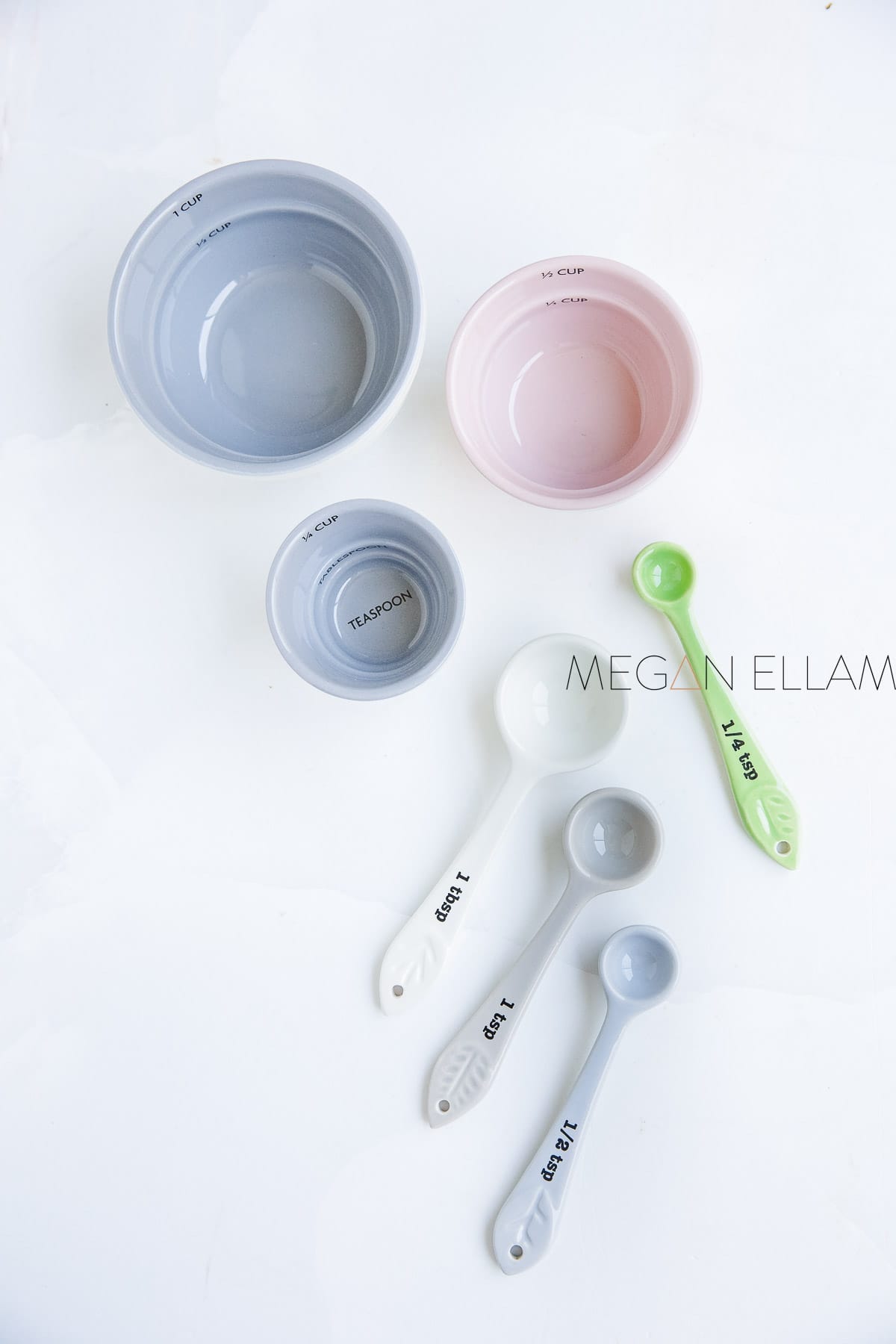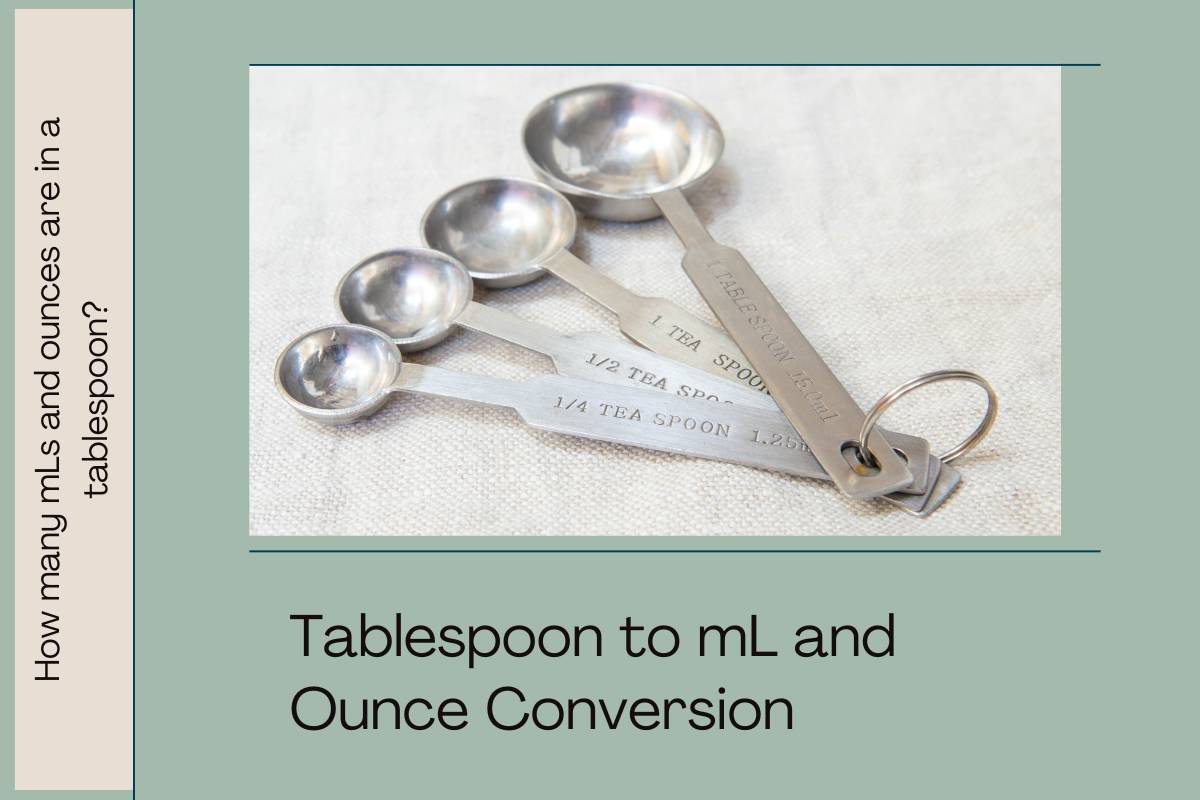
As a dedicated home cook and passionate recipe developer, precise measurements are really important to me. Understanding the nuances of kitchen measurements, especially the conversion between teaspoons and tablespoons, and getting the measurements precise can be super important.
Whether you’re following a classic American recipe, converting your family’s favourite baking recipes from Nonna, or your favourite Australia low carb blogger (me) you like to know that you are getting the recipe right.
This guide, delves into the intricacies of teaspoons and convert tablespoons, exploring their conversions across different measuring systems, the variance between wet and dry ingredients, and the significance of metric versus imperial/US customary measures. I hope this helps you get more accurate results with all recipes in the future.
Use the calculator to convert wet and dry measures into teaspoons or tablespoons for both metric and US Customary volumes.
What is a Tablespoon?
One tablespoon, denoted as “tbsp” or “T,” is a unit of volume measurement commonly used in cooking.
In the US milliliters in a tablespoon is equal to three teaspoons or approximately 15 milliliters (a simple formula of 15 ml to 1 tbsp or 3 tsp to tbsp). However, it’s important to note that how many ml is in 1 tablespoon may vary with a metric tablespoon, as discussed below. In Australia, we have a bit of a “mixed bag” of tablespoons sizes. Generally speaking, most of the metric tablespoons in Australia are 20 ml or 4 teaspoons in size. I should mention that unless otherwise stated in my measurements I have moved to a 15 ml tablespoon for all of my recipes.
What is a Teaspoon?
A teaspoon, abbreviated as “tsp,” is one-third of a tablespoon or approximately 5 milliliters. Whether the units used are liquid or dry ingredients, the teaspoon serves as a fundamental unit for precise recipe execution.
Simple Volume Conversion Chart
For an easy conversion table here are some simple measures.
| Cups (US) | Milliliters (ml) | Ounces (oz) | US Tablespoons | AU Tablespoons | Teaspoons |
|---|---|---|---|---|---|
| 1/4 | 60 | 2 | 4 | 3 | 12 |
| 1/2 | 120 | 4 | 8 | 6 | 24 |
| 2/3 | 160 | 5.33 | 10.67 | 8 | 32 |
| 3/4 | 180 | 6 | 12 | 9 | 36 |
| 1 | 240 | 8 | 16 | 12 | 48 |
| 2 | 480 | 16 | 32 | 24 | 96 |
Metric vs Imperial/US Customary Measures
Imperial/US customary measures are predominantly utilized in the United States and other countries with ties to the British Empire. On the other hand, the metric system, embraced by most of the world, offers a more standardized approach to measurements, promoting global uniformity in scientific and culinary applications. Understanding both systems is essential, especially when catering to a diverse audience with varying preferences and familiarity with measurement standards.
Differences Between Wet and Dry Ingredients
When dealing with kitchen measurements, it’s crucial to recognize the distinctions between measuring wet and dry ingredients. While liquids adhere to volume measurements, dry ingredients often vary in weight. This discrepancy highlights the importance of proper measuring tools and techniques to achieve the desired consistency and flavor profile.
It is easier to consider the weight of water versus the weight of coconut flakes for example.
1 tablespoon of water or oil is not likely to weigh the same as the 1 tablespoon of coconut. Is it? We can still fit both ingredients into a tablespoon but that does not mean that gram for gram (weight-based) will be the same. The old saying of comparison is if you had a bucket of water of water and a bucket of feathers they wouldn’t weigh the same would they?
The same goes for different ingredients measured out by the tablespoon. A spoon is an area-based based measurement, not a weight-based measure. This is why I add grams to most of the recipes that have important measurements in them. This is even taking into account the sizes of the tablespoon used. So, if you see a recipe with lots of tablespoon measures and different weights in grams or ounces next to them this is why.
Converting Milliliters to Tablespoons and Grams to Teaspoons: A Handy Guide Converting milliliters (mls) to tablespoons (tbsp) and grams to teaspoons (tsp) requires attention to precise conversions to maintain the integrity of your recipes. Here’s a quick reference guide to aid you in accurate conversions:
- 1 tablespoon (US) = 14.79 milliliters
- 1 tablespoon (Metric) = 20 milliliters
- 1 tablespoon (Australian) = 20 milliliters
- 1 teaspoon (US) = 4.93 grams
- 1 teaspoon (Metric) = 5 grams
FAQs
For liquid ingredients, use a specialized tablespoon measuring tool, ensuring the liquid aligns precisely with the tablespoon’s edge. For dry ingredients, spoon the ingredient into the tablespoon, leveling it off with a flat utensil for an accurate measurement.
Yes, in most cases, you can interchange US tablespoons with Australian tablespoons without a significant impact on the recipe’s outcome. However, it’s crucial to note that subtle variations in measurements may slightly alter the texture and flavor of the final dish.
To convert milliliters (mls) to tablespoons (tbsp), refer to the standard conversions provided earlier in the article. You can also use measuring tools specifically calibrated for both milliliters and tablespoons for precise and consistent results.
For a US T, there are 3 teaspoons in a tbsp. In a metric Australian tablespoon there are 4 teaspoons.

Useful Links for Cooking Measurements
Differences Between Wet and Dry Ingredients
When it comes to discerning between an Australian tablespoon and a US one in your recipes, there’s usually no need to sweat the small differences.
We do get a lot of questions regarding our recipes like Keto Pasta, Keto Tortillas and Thick Yogurt where ingredients like psyllium husks are used to thicken a mixture. Using an Australian metric measure may vary in the consistency shown in my images or videos but they do not really affect the end result. The measurement difference is so small that while a batter may be a bit looser in consistency, ultimately the recipe still works. I do my best to test both metric and imperial measurements.
In most recipes, these variations won’t significantly affect the final outcome. However, for ultimate precision, especially when a recipe provides measurements in grams or ounces, consider investing in a set of kitchen scales. By relying on weight measurements, rather than volume-based ones such as cups, teaspoons, or tablespoons, you can achieve consistency in your cooking, bringing your low-carb recipes to life with precision and finesse every time.
RAVING NEW FAN? Subscribe to our newsletter. Join our keto community on Facebook, Instagram or see all the new stuff and easy keto recipes on Pinterest.
2 responses to “How Many ML in a Tablespoon”
-
Hi Megan
You state: “1 tablespoon (US) = 14.79 milliliters” in the article.
Wouldn’t that be 14/79 grams rather than mL? I thought a US Tbsp is 15mL ?Great article!
-
Thanks so much for this information. I had no idea that an Australian tablespoon is different to other metric tablespoons. It is also comforting to know your recipes will still work. I often have wondered if I am doing everything okay when I measure.


Leave a Reply